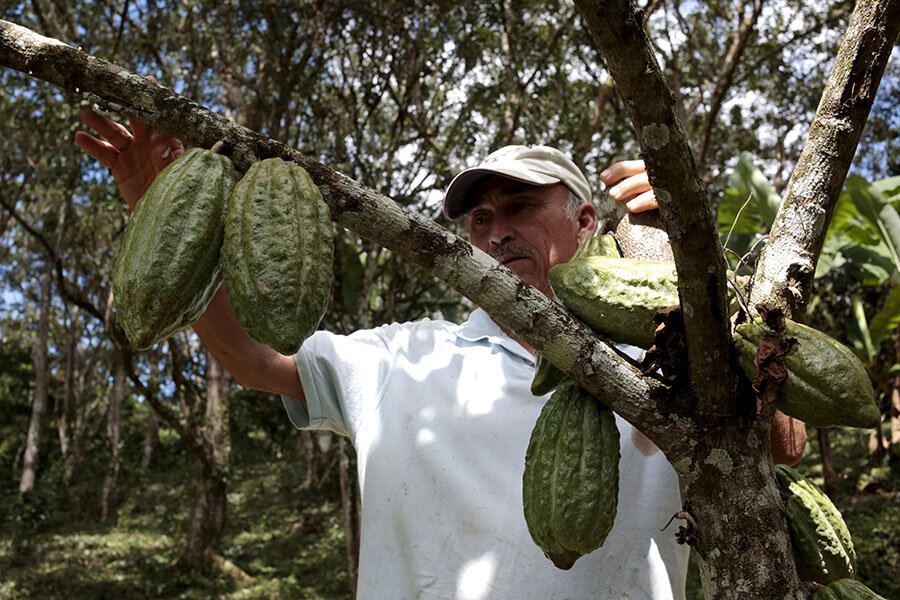Does your portfolio align with your values?
Loading...
Twelve years after he retired from the Navy, Drew Foley put his money where his mind was.
He took an inheritance from his mother, bypassed the conventional mutual funds he’d put his own money into, and sunk it instead into a solar installation company, a fair-trade farm coop, and an array of environmental and community oriented funds. “I wanted to do something more than just invest for profit,” says the Louisville, Ky., environmental activist, who eventually committed all his money to similar investments. “I started to try to do things that more aligned with my world view.”
The practice – known as impact investing – stems from a simple idea: Investment dollars should go, not just to profitable companies, but to firms directly engaged in changing the world in ways you believe in. Maybe it's a bank that emphasizes the building of affordable housing or a local company that supports your home town. There are organizations that fund entrepreneurs in India and coffee farmers in Uganda. As part of the bargain, these ventures commit to reporting the direct impact the investment dollars have had. (See The alphabet soup of social investing.)
"What we are doing now is redefining investment," says Jenn Pryce, chief executive of Calvert Foundation, a pioneer in bringing impact investing to the masses. "There's a generation coming up where this could be a light-switch moment and investing aligned with your values will be more commonplace."
Charities, foundations, and even governments are looking at impact investing as a way to address social problems. Some $60 billion is invested in impact assets, according to a 2015 survey of 146 impact investors by J.P. Morgan and the Global Impact Investing Network, a New York-based nonprofit. Roughly half the money is invested in developed markets, such as the United States and Europe, and the rest is placed in emerging markets.
But challenges remain before impact investing can go mainstream.
For one thing, success is hard to achieve – and just as hard to measure. (How do you quantify the social ills your program might have helped avert?) For another, there's an ongoing debate over whether to offer investors market-rate returns. The higher the return, the more the social entrepreneur must charge the customers she's trying to help. Then there are US regulators, who consider most impact investments too risky for ordinary people and, thus, restrict them to accredited investors (wealthy individuals with at least $1 million to invest or $200,000 in annual income).
Slowly, that's changing (see For $20, you can be an impact investor). It is hard to find impact stocks open to regular investors, says Bruce Campbell, chief happiness officer for Blue Dot Advocates, a Boulder, Colo., law firm that advises social impact companies and investors. He points to Hannon Armstrong Sustainable Infrastructure Capital (NYSE: HASI), which finances energy efficiency and renewable energy projects, as an investment open to all. (Mr. Campbell has invested personally in the company but has no business relationship with it.) Still, most of the options open to people of normal means are lending funds of one type or another, which means that investors are more lenders than shareholders, receiving regular interest payments rather than dividends or capital appreciation.
The limited offerings make impact portfolios useful for the fixed-income portion of a person’s portfolio but usually not suitable for the stock side of a portfolio. “Most of my clients still hold some [of their funds] in publicly traded securities, although all of them would be socially screened,” says Andy Loving, a longtime impact-investment financial adviser at Just Money Advisors in Louisville, Ky. (Socially responsible investing funds typically screen out companies that pollute the environment or treat their workers poorly.)
While some impact investments in high-growth, high interest-rate developing nations can generate large returns – “I have clients getting 7.5 to 8 percent paid monthly,” says Mr. Loving – these investments are typically for accredited investors and involve higher risk than developed-world offerings. Safer impact investing options tend to pay less. CRA Fund, a government bond fund that looks to invest in affordable housing and other impact areas, tripled the return of its benchmark last year. Calvert Foundation offers a one-year community investment note for $20 that pays 0.5 percent (and 3 percent for a 10-year note). One of the safest ways to invest is to bank with a community bank.
Low returns might not sit well with all investors, but they're just fine for Harvey Yoder, a Mennonite pastor and professional counselor in Harrisonburg, Va., who earns 1 to 3 percent a year with investments in Mennonite Economic Development Associates and through Calvert Foundation. "I'm not out to get rich," he says. "I'm just out to be a good steward of what I have and to help make the world a better place."
Impact investing is poised to become even more accessible as the federal government expands the ability of firms to offer shares to ordinary investors, often called direct public offerings. On Oct. 30, 2015, the Securities and Exchange Commission (SEC) voted to allow nonaccredited investors to put funds into early stage firms through crowdfunding (although the rules won’t be finalized until early 2016). It also proposed loosening the rules for crowdfunding by firms under Rule 147 of its Regulation D.
These startups, at the earliest stages of development, represent the biggest risk, so they may not be the best investments for novices, financial advisers warn. But another SEC proposal to raise the funding limits for direct public offerings from $1 million to $5 million (under Rule 504 of Regulation D) would make it easier and less expensive for more established impact investment companies to raise funds, says John Katovich, president of Cutting Edge Capital, an Oakland, Calif., a firm that helps companies with direct public offerings.








